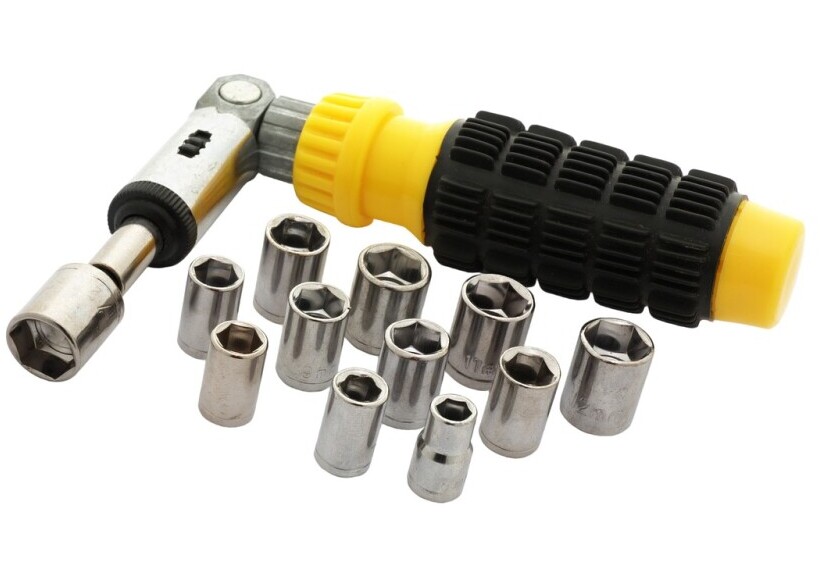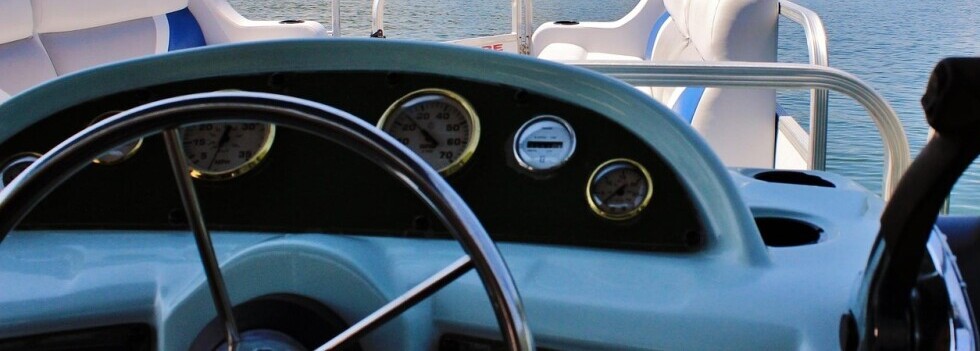Pontoon boats are all about easy weekends on the water and making memories with family.
What many folks quickly learn is that, just like any boat, pontoons need some upkeep now and then. With big flat decks and aluminum tubes, plenty can go wrong, sometimes at the worst times.
I’ve spent enough time on and around pontoons to spot the repairs that pop up most often, especially for families who pack in the crew and run a busy summer schedule. Getting ahead of these issues saves a ton of hassle.

Pontoon Boat Repairs Families Should Plan For
Pontoon boats have changed a lot over the years, with better materials and smart designs for today’s family fun. Even the best maintained pontoon will eventually need some basic fixes, especially in popular spots like the flooring and pontoons themselves. Knowing what repairs to expect makes boat ownership less stressful, and gives you more time cruising than worrying.
Pontoon use has picked up in recent years because they’re super roomy and stable for all ages. Most owners spend their time cruising slowly, tubing, or fishing close to shore, but even casual days out can lead to normal wear and tear. Hull dents from shallow water, ripped upholstery, and deck soft spots are issues I see come up yearly. Sticking to a simple maintenance plan and recognizing the first signs of trouble go a long way.
Aluminum pontoons became popular in the 1970s, and since then, pontoons have only gotten more family friendly. Modern models come with fancy electronics and plush furniture, but the classic repair needs have stayed the same. Regular checks and simple fixes mean you’ll get years of boating memories. In today’s world, with more families choosing pontoons for their outings, understanding repair basics makes weekends on the water smoother for everyone.
Main Areas That Need Attention on a Pontoon Boat
Not every family uses their pontoon the same way, but a few repairs tend to show up across the board. These are the spots I keep an eye on every season:
- Pontoon Tubes (Floats): Look for dents, leaks, and corrosion
- Decking: Watch out for soft spots, rot, or warped areas from water damage
- Furniture and Upholstery: Check for rips, tears, mildew, and sun damage
- Electrical System: Inspect wiring, lights, and battery terminals
- Bimini Top and Covers: Check for broken snaps, ripped canvas, or bent frame supports
Dealing with these common repairs early helps avoid bigger and more expensive problems down the road. For families planning extended trips or hosting guests regularly, paying extra attention to these areas can prevent trips from being cut short due to needed patch-ups.
Common Pontoon Repairs and How to Tackle Them
Pontoon boats are simple in some ways, but a few repairs are almost guaranteed after enough summers out on the water. Here’s a closer look at what to watch for and how to approach a fix.
Pontoon Tube Leaks and Damage
Pontoon tubes, or the big aluminum floats under the deck, are built tough, but a rock or hidden stump can still dent or puncture them. Leaks are often found by spotting water sloshing inside a pontoon or noticing the boat listing to one side. A quick way to check is tipping the boat to see if water pours out of a drain hole; if it does, there’s a leak to track down and patch up as soon as possible.
Repairs vary from simple to complex. Small pinholes can sometimes be patched with waterproof marine epoxy on a dry surface. Big dents or tears need professional welding. Keeping the tubes clean helps spot damage early. After a run-in with something underwater, I always check the pontoons up close at the dock to make sure there are no new dents or troubles brewing.
Many boaters keep a close eye on tubes by checking them for any sign of corrosion, especially after spending time in salt or brackish water. Prompt attention to even a small ding helps prevent water intrusion that could mean hauling the boat out for a bigger fix. When in doubt, consult a repair shop familiar with pontoons—they’ll know how to handle more serious repairs.
Decking Issues: Soft Spots and Rot
Older pontoon boats often have plywood decks, and as families pile on with wet gear or after heavy rain, water sneaks into cracks. Over time, this causes soft spots or rot, especially around hatches and under seats. Stepping down and feeling a “give” underfoot is a pretty clear sign you’ve got a problem.
Replacing just a section of bad plywood is possible if the damage is small, but bigger rot often means swapping out the entire deck. Today’s replacement decking is often marinegrade plywood or composite, which handles moisture a lot better. When doing this, upgrading the vinyl or carpet covering is a smart move, too. Walk around the deck at the start and end of each season to catch soft spots before they expand.
Furniture and Upholstery Repairs
Pontoon furniture takes a beating; think wet towels, spilled drinks, pets, and hours of sun. Fading, cracking, rips, and mildew are all extremely common. Vinyl repair kits work for small rips, but sun damaged or moldy areas usually need new covers or cushions. If a whole seat is beyond saving, replacement seats from marine suppliers are widely available and make a boat look like new.
For families with younger kids or pets, washable seat covers or removable cushions make cleanup and repairs so much easier. A simple upholstery cleaner is handy for monthly cleaning and fending off ongoing mildew. Keeping the seating dry after each use and using UV protectant sprays regularly are small steps that can extend the life of pontoon furniture.
Electrical and Lighting Fixes
Pontoon boats often develop electrical gremlins after a few seasons, especially if left outside. Issues with navigation lights, stereo systems, fish finders, or even charging ports can usually be traced to corroded connections or bad fuses.
For light repairs, checking for blown bulbs and cleaning corroded sockets is pretty straightforward. For bigger problems, a multimeter comes in handy to find bad wires. Marine wiring is exposed to a lot of moisture, so rebooting old connections with fresh marine-grade wire and heat shrink connectors pays off long term. Keeping a small tool kit with fuses, wire cutters, and spare bulbs is a huge time saver when little things stop working during a trip.
To keep things running smoothly, check your battery and charging system before launch. A quick onceover for corrosion or loose wires helps dodge the surprise of a dead battery right before a family outing. If you need to replace a fuse, always use marine grade replacements rather than regular automotive ones; the boat’s harsher environment calls for sturdier parts.
Bimini Top and Cover Repairs
Family pontoons almost always have a Bimini top for shade, but canvas wears out fast in sun and wind. Ripped seams, missing snaps, and bent support arms are common. Canvas repair tape or patches can hold things together for a while, but big tears or dry rotted canvas means a replacement is coming soon. Bent supports are sometimes fixable by careful bending, but really mangled frames need to be swapped out instead.
Cleaning the Bimini top regularly with mild soap can keep fabric durable longer, and reapplying water-proofing spray before peak summer keeps rain from soaking through. Have a backup cover or emergency tarp on board for quick shelter in case weather turns unexpectedly rough.
Maintenance Tips That Help Prevent Repairs
Plenty of repairs can be avoided just by sticking to a basic maintenance routine. A simple 10minute check after each use and a longer lookover once a month keeps most issues from getting serious. Here are habits that really help:
- Wash and dry the deck and furniture after each trip
- Inspect pontoons for dents or leaks regularly
- Flush the engine and clean the propeller often
- Keep wiring and battery terminals clean and dry
- Store the boat covered, off the ground if possible
Most of these checks are easy enough for any family member to help with and make a big difference in the boat’s lifespan. Getting kids involved in simple cleaning and checking for dings or rips helps everyone take some ownership and learn boat safety along the way. Plus, keeping up with maintenance means fewer big surprises right before a holiday weekend.
Real World Examples of Repairs
Practically every pontoon owner I know has a story: like the time a surprise thunderstorm ripped the Bimini top just as everyone scrambled for cover, or when a forgotten anchor dented a tube. One friend lost power to the stereo right before a big family birthday on the lake, and it turned out, it was just a rusted fuse. The faster you spot and fix issues, the less they impact your plans. These tales are reminders that quick repairs can save the whole day.
- Deck Soft Spot: Water got trapped under old carpet, causing rot near the rear seats. Prying up the carpet and replacing the plywood fixed it before it became a bigger structural issue.
- Torn Upholstery: Torn seams from sun exposure were repaired with a marine vinyl kit, extending the life of the seats another season.
- Pontoon Leak: A slow leak after clipping a submerged tree was repaired with marine epoxy on a dry day, holding strong for months until winter service could weld it.
These stories show how common repairs sneak up, but a quick fix can usually save the weekend. When you keep an eye on trouble spots and act fast, more weekends go as planned.
Frequently Asked Questions About Pontoon Repairs
How do I spot a leaking pontoon tube?
Look for odd tilting, water inside the hull, or sloshing when the boat moves. Open the tube’s plug, and if water drains out, you’ve got a leak to track down and fix as soon as you can.
What’s the best material to recover a pontoon deck?
Marine-grade plywood and woven vinyl are both popular. Composite decking costs a bit more but handles water better and needs less attention. In high moisture climates, composite is your friend for long life.
How long should pontoon furniture last?
With care and covering, vinyl furniture will often last seven to ten years. Regular cleaning and quick repairs keep things looking fresh, and using protective sprays goes a long way.
Can I fix most pontoon issues myself?
Many repairs, like light wiring, vinyl patching, or cleaning corrosion, are DIY friendly. Hull welding or full deck replacements are usually better left to a pro, but starting with small fixes yourself builds confidence for bigger projects.
The Core Repairs That Matter for a Safe, Fun Summer
Pontoon boat repairs are usually simple if you catch them early. The main jobs, looking after pontoon tubes, deck, furniture, and covers, come with the territory, but tackling small issues before they spread keeps your boat on the water longer. Routine checks, quick cleaning, and a toolkit in the boat go a long way. Families who track down problems quickly and don’t put off repairs enjoy fewer headaches and more good times under the sun.
**Here’s a little transparency: Our website contains affiliate links. This means if you click and make a purchase, we may receive a small commission. Don’t worry, there’s no extra cost to you. It’s a simple way you can support our mission to bring you quality pontoon boating content.
